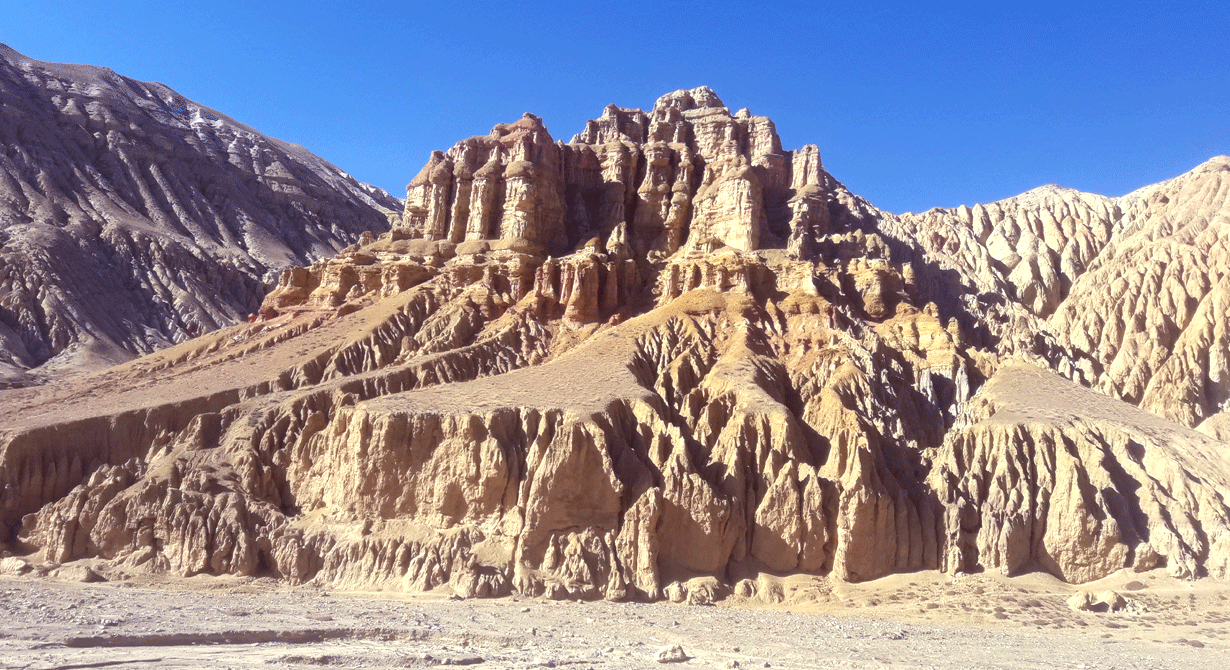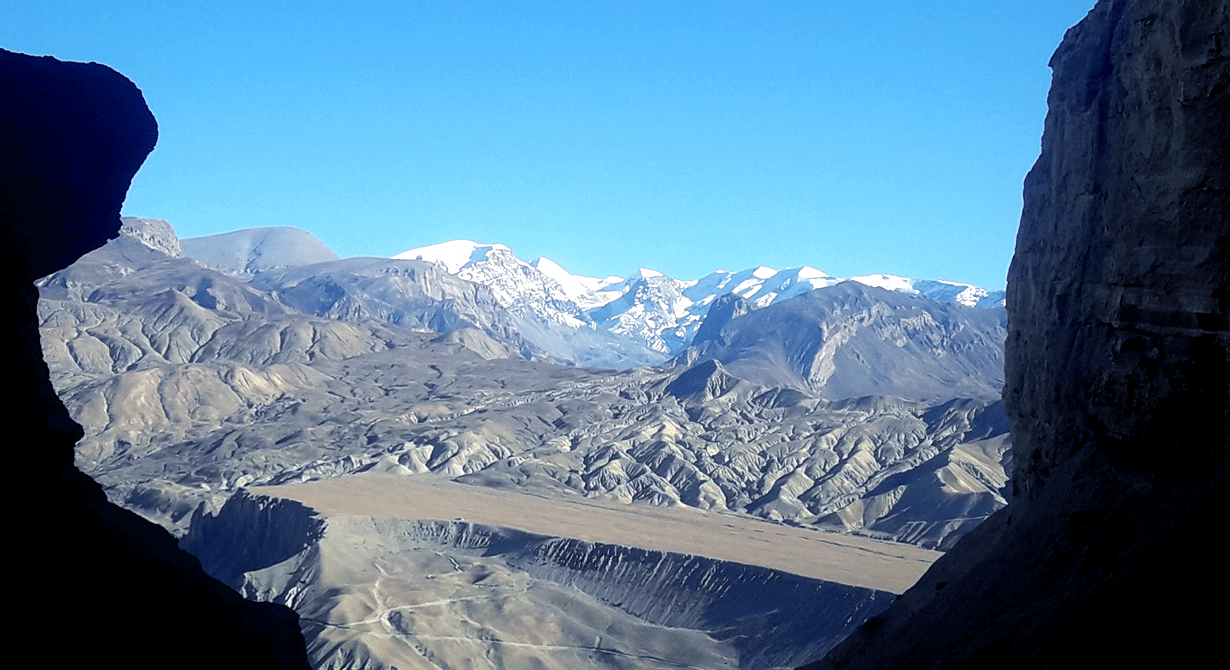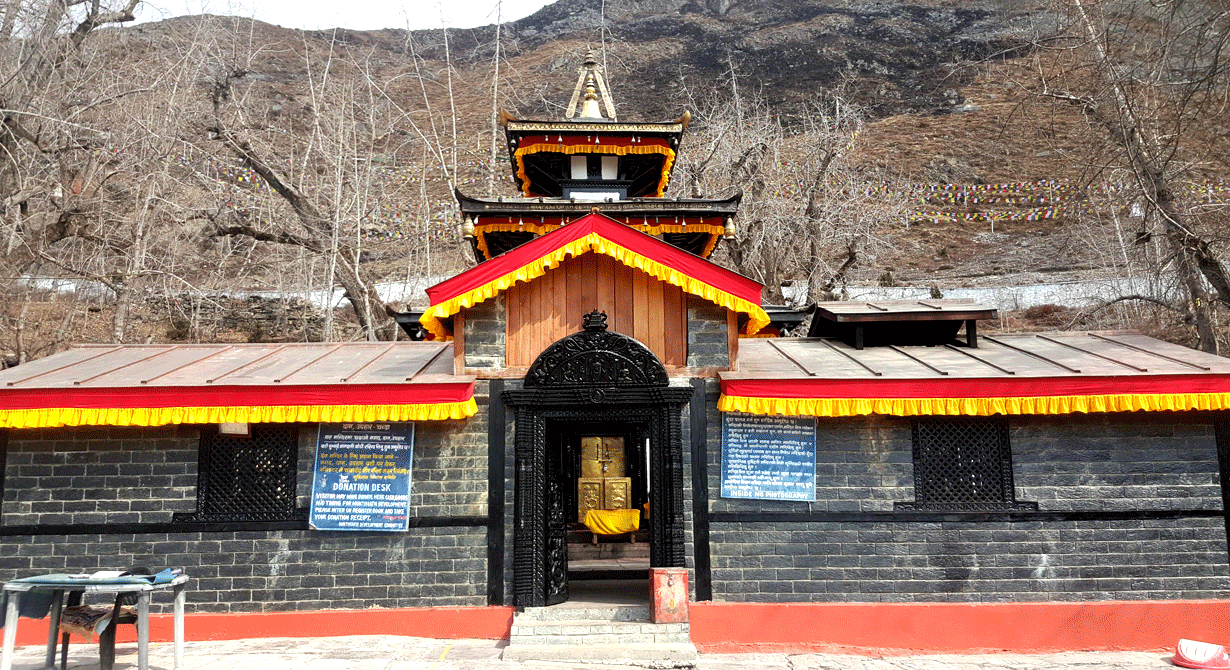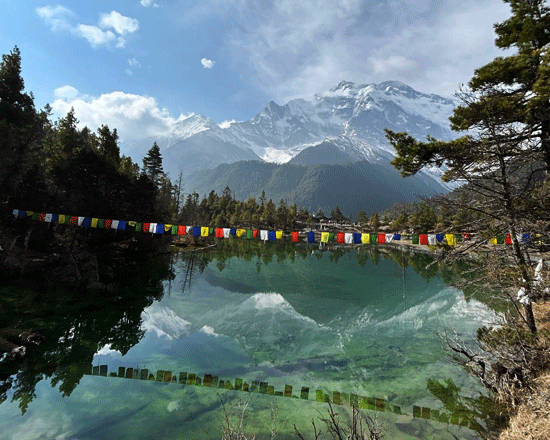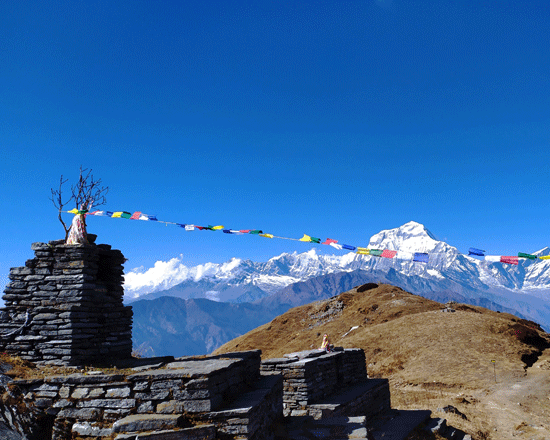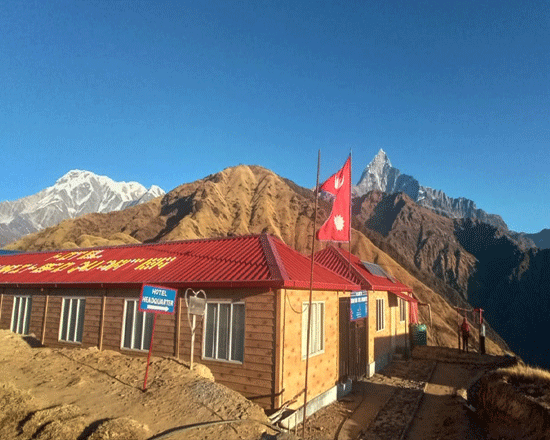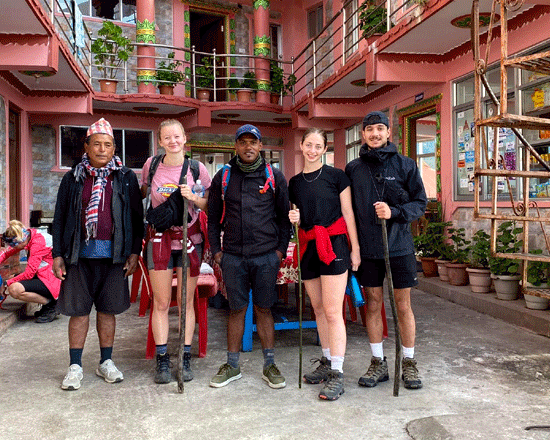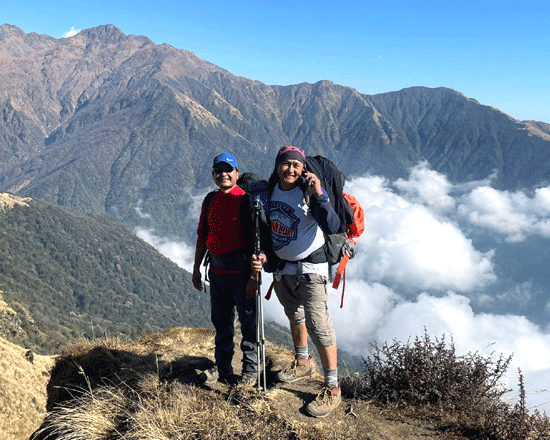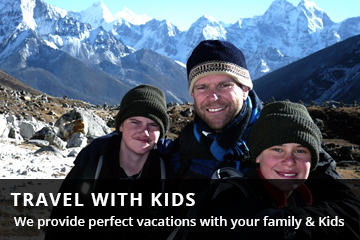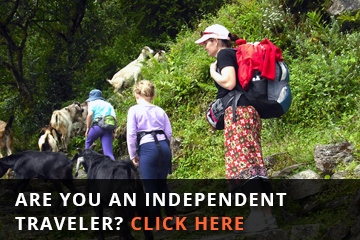Lower Mustang Trek
Lower Mustang Trek
Annapurna RegionTrip Facts
Since the terrain can be hard and the days long, hikers on these treks should be in good physical condition and have some previous mountain walking experience. Steep climbing may be involved, although it is never necessary to use ropes. Treks at this level can he arranged for periods of 16 to 21 days. Typically, a gradual ascent through a green river valley will lead you up to a number of high passes, where you will reach the altitude of 5416m. Often times, you will get a close insight into the Tibetan culture. Participants should expect to trek above 5416m/17872ft.
100%
Overview
Lower Mustang Trek with Lubra village
The Lower Mustang Trek is a popular trekking route in Nepal that takes you through the lower region of the Mustang district. It is a relatively easy trek and is suitable for people of all ages and fitness levels.
The Lower Mustang Trek is a short and scenic trek that doesn’t require expensive permits like an Upper Mustang trek. This region is home to many ancient monasteries and unique lifestyles. The 5-day Lower Mustang trek begins with a flight or drive to Jomsom via Pokhara. Trek around Jomsom to discover the stark, barren landscapes of Lower Mustang, dotted with Tibetan Buddhist cultural attractions. The Lower Mustang Trek is an ideal option for trekkers who are short on time and don’t wish to embark on a strenuous trek. It is a classic route along the ancient path to Tibet through the Kali Gandaki Valley, the gateway to Nepal’s hidden treasure – Mustang.
Lubra Village
A hidden gem in the Lower Mustang region, Lubra Village (2770m) offers a unique glimpse into the Bonpo culture, one of the oldest spiritual practices in Nepal. This village is home to one of the last Bon communities, preserving spiritual rituals that predate Tibetan Buddhism. The trek to Lubra takes around 4 to 5 hours from Jomsom, following the Kali Gandaki River and branching into a secluded valley. Visitors can explore the Bonpo Monastery and learn about the distinctive customs, cosmology, and rituals of the Bonpo people.
The village is a peaceful retreat, nestled in the rugged landscape, and offers an opportunity to immerse yourself in the local way of life. It is known for its spiritual significance, with a history that intertwines with both Buddhist and pre-Buddhist traditions. Spending a night at Lubra, in a local teahouse, allows trekkers to experience the hospitality of the Thakali and Bonpo people, who are known for their warmth and generosity. The village is not only culturally rich but also offers mesmerizing views of the surrounding mountains and valleys.
The Festival celebrated in Lower Mustang Valley
Lower Mustang Trek is not just about trekking and adventure. It is also about warm hospitality, a genuine smile, and the exotic culture and traditions of Mustang. Get to know locals, talk with them, and live like them for a while to truly come to know Jomsom as it is. In addition to the people, cuisine, and lifestyle of the Thakali, Gurung, and Lopa ethnicities, Jomsom hosts a unique Yartung festival in early September.
The annual Yartung horse racing event takes place over a week. The festival of men and horses racing in a Tibetan-influenced celebration is a must-see in Jomsom. In addition to the festival, learn about the culture of the Thakali. When you choose a homestay over a commercial lodge, you’ll have more chances to observe the culture, tradition, and lifestyle of the mountains up close.
Mustang Eco Museum in Jomsom
A Mustang Eco Museum is also located in Jomsom, where you can learn about the history, architecture, and culture of the area. This is the ideal place to learn about the local art, history, culture, and artifacts of Mustang. The Sakyapa Monastery, also known as Kagchode Thubten Sampheling Gompa at Kagbeni, dates back to the 14th century. A ridge overlooks the Kaligandaki River from the monastery.
Lower Mustang Trek is visibly and culturally different from other parts of Nepal. Tibet’s Buddhist traditions influence the culture, traditions, dialects, and clothing in this region. The lifestyle at lower elevations drastically changes as you gain altitude. Experience the diversity and richness of culture at Jomsom.
The village of Kagbeni is located in the valley of the Kali Gandaki River which is also the valley of the Lower Mustang trek, Kagbeni is considered one of the oldest villages in the Himalayas. Kagbeni is a village in the rural municipality of Baragubg Muktikshetra in the Gandaki province of western Nepal. The valley is located at an altitude of 2,804 meters above sea level and has an area of 58.3 square kilometers. Kagbeni receives power from a hydroelectric plant along the nearby Kali Gandaki River. Despite being a small village, it has gained popularity and stardom throughout the world because of its natural beauty, culture, tradition, and landscape.
Pilgrimes of Hindu Religions
Kagbeni is one of the most famous religious sites for Hindu pilgrims. Kagbeni is known for its Pitri-Puja which is also known as Pitri-Moksastala. This ceremony is done to help remove the lost souls of the ancestors from hell and bring them to heaven, resulting in blessings for all members of the family. As a result, Kagbeni is an imperative place for Hindus to perform Pitri-sraddha. Many Hindu pilgrims stop at Kagbeni the day before heading to Muktinath to perform the final ritual for the departed souls of their ancestors.
Kagbeni is also an influential village among Buddhists. The village has Buddhist monasteries and temples dating back thousands of years. In its entirety, the village is a Tibetan village unlike any other. Its language, lifestyle, and landscape are also similar to Tibetan. The Buddhist culture that Pelisse described fifty years ago is still evident in today’s town with rows of large prayer wheels, a monastery that blows its horns at dawn, and Tibetan-influenced architecture.
The Valley is popular for Shaligram which can be found on the bank of the Kali Gandaki rivers of Lower Mustang. Shell stone (Shaligram) is a fossilized shell stone. Shaligrams is an incarnation of Lord Vishnu in Hinduism. According to Hindu mythology, Lord Vishnu turned into Shaligram after he was cursed by Vrinda, the wife of Jalandhar.
Hindu devotees worship Lord Vishnu as a symbol throughout the world. The Kali Gandaki River in Nepal is the main source of Shaligram, making it a sacred river. Different religious scripts use different types of Shaligrams.
There are different characters, including a form of Lord Vishnu represented by chakra. Normally, Shaligrams look like black-colored, spherical ammonite fossils with or without chakra or might contain golden colors.
Highlights of the Lower Mustang Trek
- Dhaulagiri (8,167m): The seventh-highest mountain in the world is a constant feature of the trek.
- Annapurna I (8,091m): Offers breathtaking views as you ascend through the Kali Gandaki valley.
- Nilgiri Himal (7,061m): Known for its striking and sharp peaks, a standout feature of the region.
- Tukuche Peak (6,920m): Often visible alongside Dhaulagiri, adding to the scenic grandeur.
- Marpha Village: (Apple Capital of Nepal) is Famous for its apple orchards and products like dried apples, apple pies, and local apple brandy.
- Traditional Architecture: Narrow cobbled streets and whitewashed houses with flat roofs are characteristic of this picturesque Thakali village.
- Muktinath Temple (3,710m)
- Sacred Pilgrimage Site: Revered by Hindus and Buddhists, Muktinath Temple is known for its 108 water spouts and eternal flame.
- Spiritual Atmosphere: A tranquil setting surrounded by the Himalayas makes it a must-visit destination for trekkers and pilgrims alike.
- Tatopani (Hot Springs): Natural Hot Springs is a popular spot for relaxation and rejuvenation after days of trekking. The water is believed to have therapeutic qualities, especially for muscle aches and joint pain.
About the Company
Nepal Wilderness Trekking Pvt. provides experienced guides and porters for your Lower Mustang trek. All of our guides have participated in the required training from the Nepal Government. I also led Lower Mustang adventure trekking activities in the Mustang for a long time. We always use experience and training local guides. Your safety, security, and satisfaction are our top priorities. We provide you with the most experienced and friendly guides based on these three factors. We are very careful about choosing the right guide and program for you. All of our guides and porters are insured, well-fed, and paid.
Overall, the Lower Mustang Trek is an excellent option for anyone looking to experience the beauty and culture of Nepal without committing to a long and strenuous trek.
Detail Itinerary
- Day 01: Pokhara to Jomsom (2720m) - Trek to Lubra Village (2770m).
Your guide will pick you up from your hotel in Pokhara early in the morning and transfer you to the airport. Take a scenic 25-minute flight to Jomsom, the administrative center of the Mustang region, located at 2720m. The flight offers stunning views of the Annapurna and Dhaulagiri mountain ranges and the Kali Gandaki Gorge, the deepest gorge in the world. Upon arrival, begin your trek to Lubra Village, a journey of approximately 4 to 5 hours. The trail follows the Kali Gandaki River and branches toward a hidden valley where Lubra is located. Lubra is one of the last Bon communities in Nepal, preserving ancient spiritual practices predating Tibetan Buddhism. Explore the Bonpo Monastery and learn about their unique rituals and cosmology. Overnight stay in Lubra Village at a local teahouse, experiencing the hospitality of the local Thakali and Bonpo people. - Day 02: Lubra Village to Muktinath (3800m).
After breakfast, trek to Muktinath, a journey of approximately 5 to 6 hours, ascending through arid landscapes with panoramic views of Nilgiri, Dhaulagiri, and the Annapurna Massif. Muktinath, at an elevation of 3800m, is a significant pilgrimage site for both Hindus and Buddhists. Along the trail, observe the unique flora adapted to the dry, high-altitude climate, including juniper and alpine shrubs. The area reflects the diverse cultures of the Mustang region, with influences from Tibetan Buddhism and Hindu traditions. Overnight at a comfortable lodge in Muktinath. - Day 03: Exploration Day in Muktinath.
Spend the day exploring Muktinath and its spiritual significance. Visit the Muktinath Temple, dedicated to Lord Vishnu, where 108 sacred water spouts (Mukti Dhara) symbolize purification. Witness pilgrims performing rituals for spiritual liberation (Moksha). Explore the nearby Jwala Mai Temple, famous for the eternal flame burning from natural gas. Visit the Buddhist monastery and marvel at the harmonious coexistence of Hindu and Buddhist practices in this sacred area. Overnight at the same lodge in Muktinath. - Day 04: Muktinath to Jomsom (2720m).
After breakfast, descend back to Jomsom on a 5 to 6-hour trek. The route retraces through the windy Kali Gandaki Valley, known for its ancient fossil deposits (Shaligrams), considered sacred by Hindus. Along the way, pass through traditional Thakali villages, known for their rich cultural heritage and apple orchards. Arrive in Jomsom and check into a lodge. Enjoy the evening exploring the town and interacting with the local community. Overnight at a lodge in Jomsom. - Day 05: Jomsom to Pokhara.
Early morning flight back to Pokhara, approximately 25 minutes. Enjoy aerial views of the Annapurna and Dhaulagiri ranges. Upon arrival in Pokhara, your trek concludes, and you will be transferred to your hotel.
Cost Included
- Here's the edited version:
- Airport/Hotel/Airport Transportation.
- All meals (breakfast, lunch, and dinner) are provided during the trek.
- Trekking permits and all necessary paperwork.
- Round-trip flight ticket from Pokhara to Jomsom and back to Pokhara.
- Accommodation in lodges, tea houses, and homestays during the trek.
- An experienced, government-licensed, English-speaking trekking guide familiar with the area.
- One porter for every two to three participants (Note: Additional cost applies for solo clients requiring a porter).
- Sleeping bag and duffle bag.
- Medical supplies (first aid kit provided).
- All government taxes.
- Service charge.
Cost Excluded
- Here's the edited version:
- Airfare for international flights.
- Nepal entry visa fees upon arrival at Tribhuvan International Airport (varies by duration: $25-30 for 15 days, $40-50 for 30 days).
- Accommodation and meals in Kathmandu and Pokhara before and after the journey.
- Personal equipment for high-altitude and cold temperatures.
- Emergency high-altitude rescue and evacuation, covered by travel insurance.
- All beverages, including soft drinks (e.g., coke, beer), and caffeinated drinks.
- Drinking water, mineral water, dessert, laundry, etc.
- Tips for the guide and porter.
- All costs and expenses not listed under "cost includes" are excluded.
- Costs or delays arise from circumstances beyond the control of the management, such as landslides, weather conditions, itinerary changes for safety reasons, illness, government policy changes, strikes, etc.

